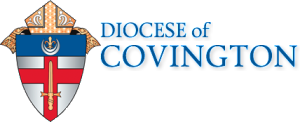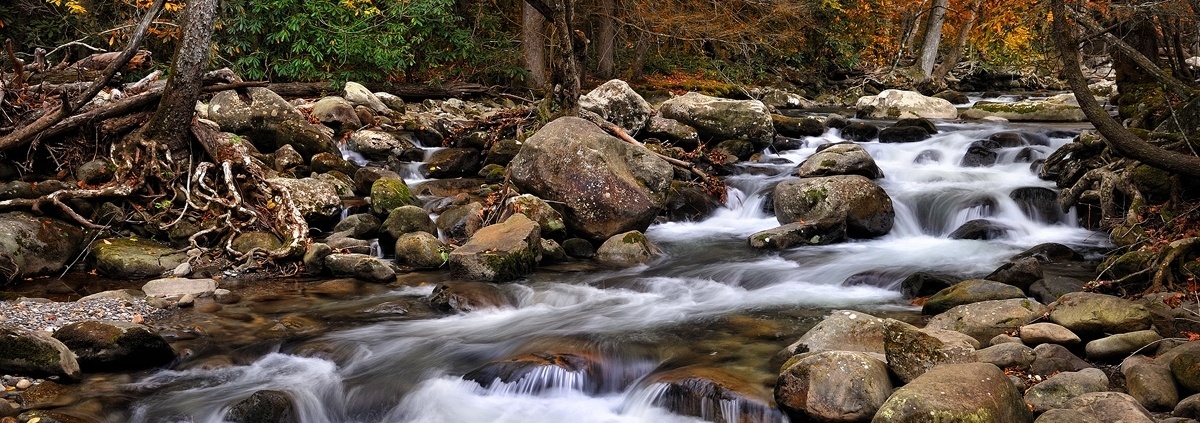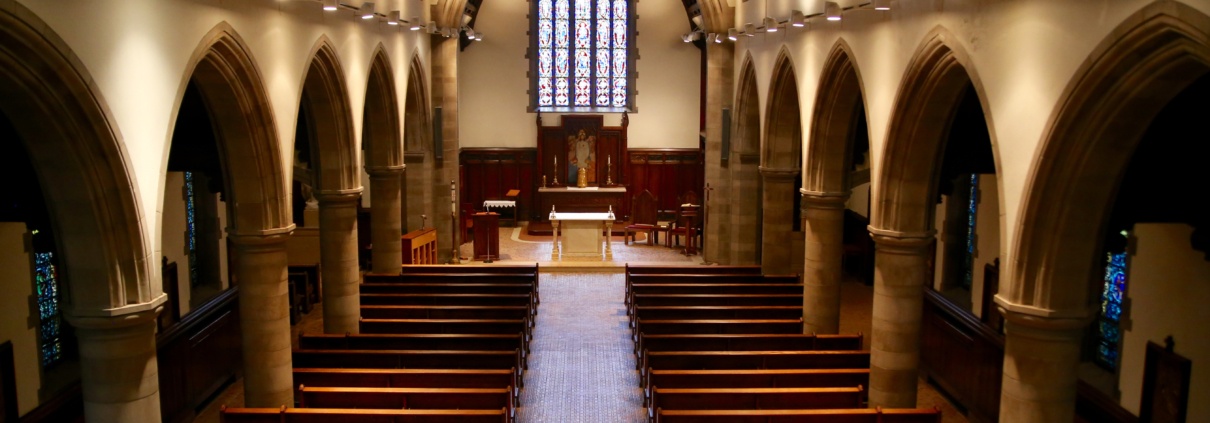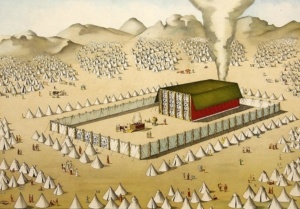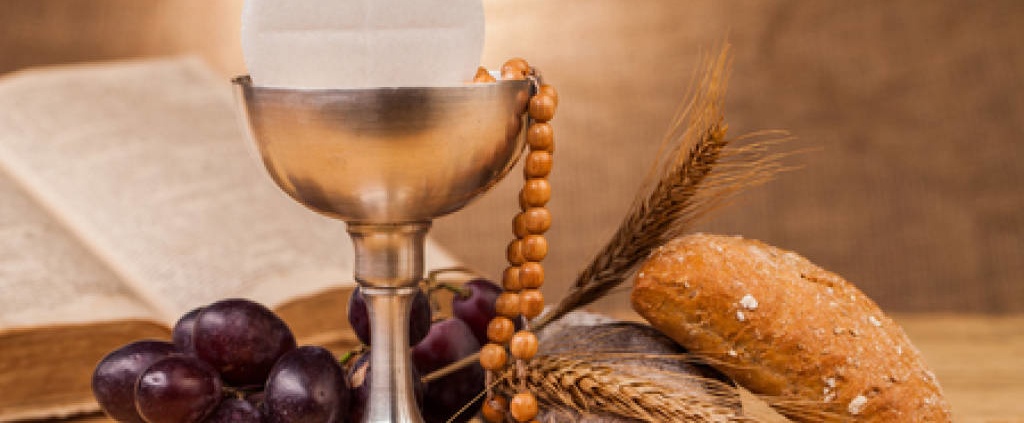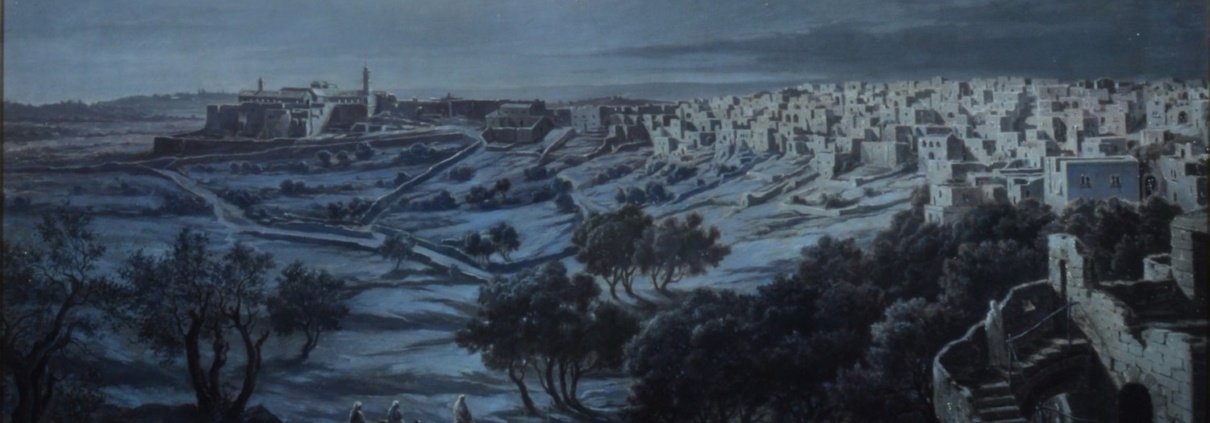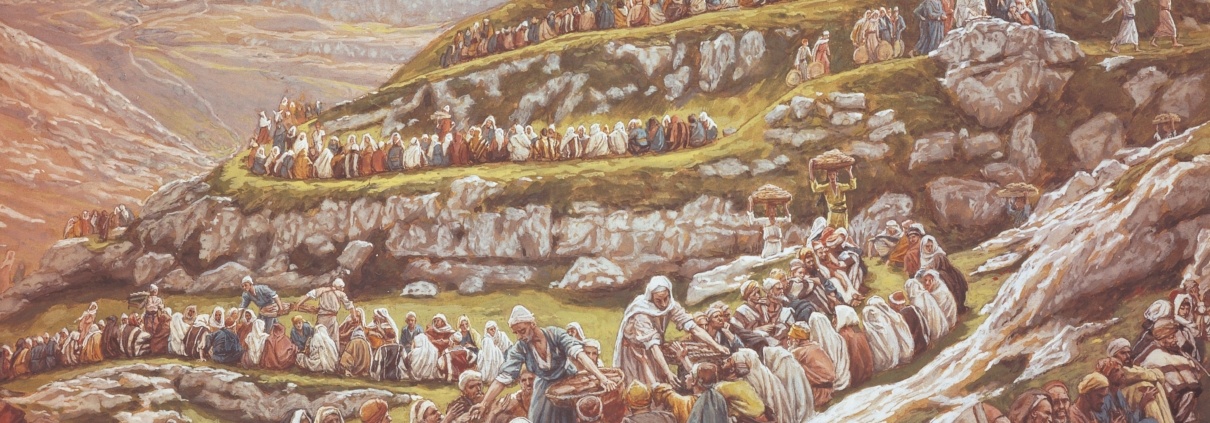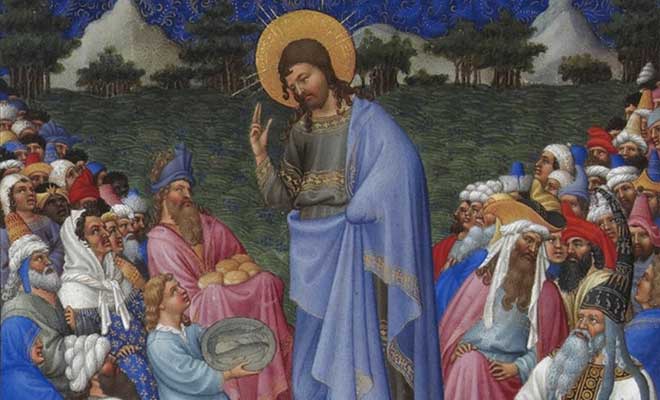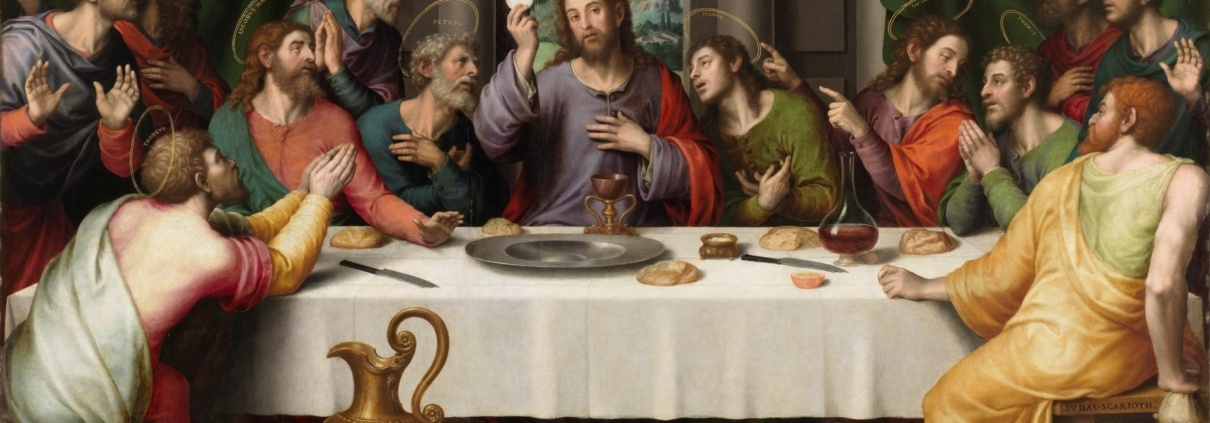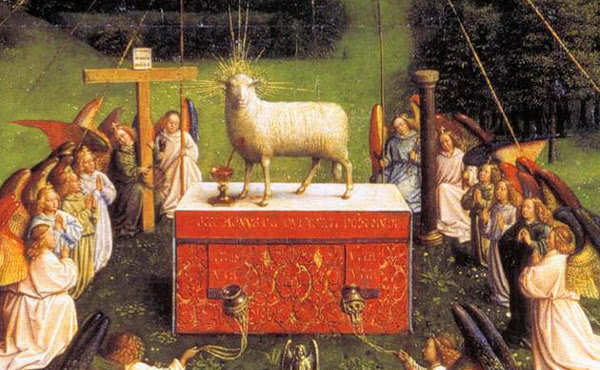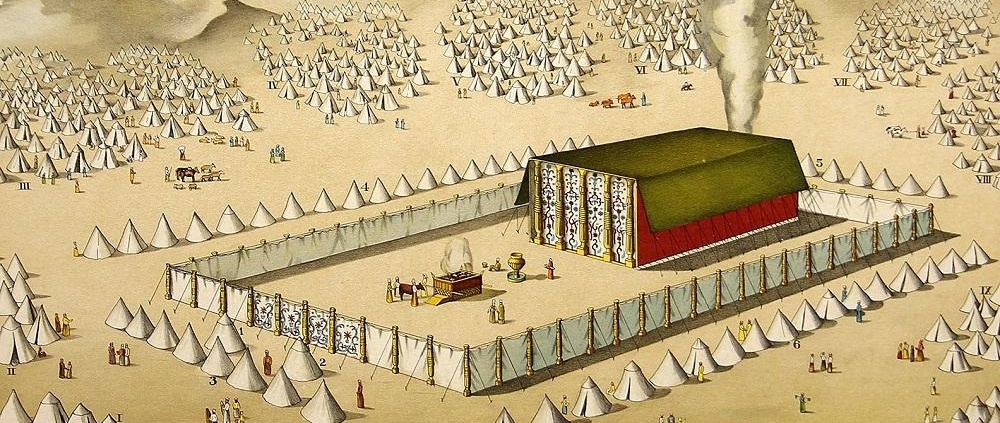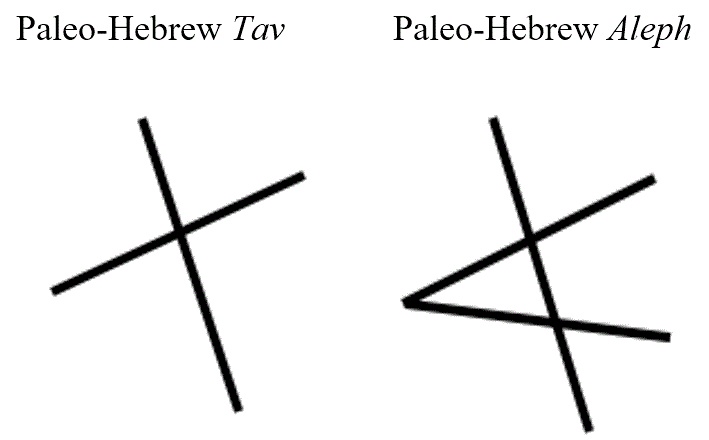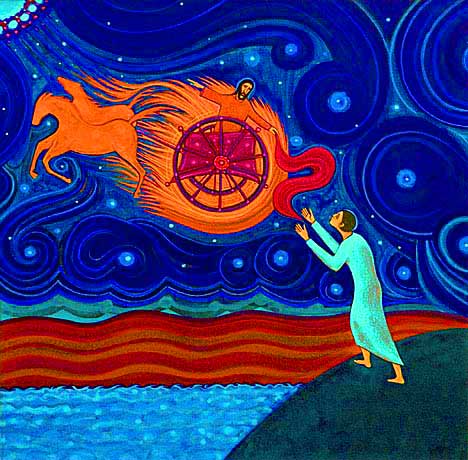By Dr. Alma Burnette.
“In beginning created Elohim (…) the heavens and the earth.” Genesis 1:1
In the center of this verse, in Hebrew, is an untranslatable word, which is two Hebrew letters — the “aleph” and the “tav” — the first and last letters of the Hebrew alphabet. In Greek the letters are the Alpha and the Omega. It serves the grammatical purpose of being the direct object pointer. These two letters form a concept rather than an actual word. They represent all the words of God by which all things were spoken into existence, including the Eucharist. These two letters are peppered throughout the Old Testament, seasoning its meaning. The rabbis teach:
When the Messiah comes he will explain the meaning of the aleph and the tav. And he did in Revelation: “I am the Alpha and the Omega, the first and the last, the beginning and the end.” (Rev. 22:12) The same concept is in John 1:1.
When God made man, he made him out of the earth’s pre-created dust and breathed life into the lifeless form, bringing man into being by his previously spoken words, “Let us make man in our image.”
During the Mass the priest says, “Blessed are you, Lord, God of all creation. Through your goodness we have this bread to offer, which earth has given and human hands have made. It will become for us the bread of life. … Blessed are you, Lord, God of all creation. Through your goodness we have this wine to offer, fruit of the vine and work of human hands. It will become our spiritual drink.”
The priest is exercising his ordained authority to bring life to the lifeless bread and wine, previously made by human hands, fulfilling Christ’s previous words, “This is my body. … This is my blood.”
Just as the lifeless form of the first Adam, became a living soul so the lifeless form of the bread and wine become the body, blood, soul and divinity of the second Adam, Christ.
In Genesis 2 God causes a deep sleep to fall on Adam, and from his side comes forth Eve. Adam exclaims, “This is bone of my bone and flesh of my flesh.” God allowed Christ to die, a deep sleep for his body, and his side, too, was opened (pierced) for the Church to come forth. St. Paul writes, “Because we are members of his body we are of his flesh and of his bone.” (Eph 5:30) How so? By the Eucharist being consumed at the Mass, the marriage supper of the Lamb.
In Genesis 2 and 3 the two trees planted in the middle of the garden foreshadow the Eucharist. It was a rabbi who once explained it to me.
The fruit of the trees was manna. The tree of life had unleavened manna and the tree of the knowledge of good and evil had leavened manna, both heavenly bread.” Evidence of this is found in Genesis 3:19: “In the sweat of your face shalt thou eat bread …”
The word “fruit” means more than apples, oranges or figs. It means “the product of,” like “fruit of the womb.” Adam and Eve never prepared food before disobeying God. The couple only ate from the trees, not from anything that grew from the ground, such as grain. Now, after the disobedience, Adam would work to obtain bread, and since, it did not require work before, it had to be a product of a tree — the tree of life.
With this understanding, the text in John 6:5 and Romans 5 becomes more clear. Death came into the world by the first Adam eating outside of the will of God, from the tree of knowledge of good and evil (the Law); life comes into the world by eating according to the will of God, Christ’s flesh and blood — the Eucharist, the fruit of the tree of life we call the Cross. Both are heavenly bread. The Jews prophesized that when the Messiah came he would elevate the meaning of the manna.
Eucharistic prefiguration continues throughout Genesis: the blood of Able “cries out” … fulfilled in Hebrews 12:24 where Jesus’s blood speaks; Noah planting a vineyard and grain after the flood and being permitted to eat clean animals … animals originally only for sacrifice now allowed by eating to become bone of our bone and flesh of our flesh; Abraham receiving from Melchizedek bread and wine; Jacob clothes himself in Esau’s clothes (Incarnation) and receiving the inheritance which included grain for bread and plenty of wine, that Esau, the first son (Adam) sold; Joseph depending on Pharaoh’s bread maker and cupbearer for deliverance. One died, one lived — death and resurrection in the Eucharist. Later Joseph reveals himself to his brothers after placing a cup into the grain. This led to their confession, reconciliation and the salvation of the world through grain for bread distribution.
Moses is a type (a prefiguration) of Christ. Both were born at a time when oppressors were killing Hebrew babies. Both had unusual first cribs. Both of them were raised by a man who was not their natural father. Both were God’s appointed delivers. Both were intercessors. Both offered their own lives to save the people. Both fasted 40 days and nights. Both gave up great riches to serve. Both, at their first appearance, were rejected by their own people. Both proclaimed commandments. Both provided food and drink. The list could go on and on.
There are many Eucharistic connections between the first Exodus in the Old Testament and the second Exodus brought on by Jesus.
Moses’ first public miracle was changing water to blood. Jesus’ first public miracle was changing water to wine, a forerunner of the greater miracle of changing wine to his own blood. Moses was the first priest to represent all the people. In this new position, he proclaims the Torah to the people. Jesus, the High Priest, proclaims and also fulfilled the Torah during his three-year ministry — the same number of years it takes to read through the Torah reading cycle in synagogues. After proclaiming the Torah, Moses threw the blood of the sacrifice on the people saying, “Behold the blood of the covenant which the Lord has made for you.” The priest during the Mass lifts the consecrated host and wine and says, “Behold the Lamb of God who takes away the sins of the world … ”
Moses publicly consecrates Aaron, which began the priesthood (Kohanim succession) that continues to this day. All Kohens must trace their authority back to Aaron’s consecration. Only these men and the other Levites were permitted to offer sacrifices and other priestly duties for the people. This is what Jesus did with the institution of the Twelve for apostolic succession. Only they and those they ordain have the authority to offer the Mass, announce forgiveness, etc.
The Levitical men, while serving as priests, though most were married, had to be celibate for the weeks they served as priests (five non-consecutive weeks per year, see I Samuel 21:1-5; Leviticus 15:18, 22:4). Priests ordained in the New Testament serve year-round. Peter, a married Jew, probably abstained (I Corinthians 7:5-7) before offering the sacrifice of the Mass. The lay priesthood does not have to be celibate because they are the receivers of the sacrifice, not the ones who offer.
The manna in the wilderness is explained in John 6. The manna is related to the unleavened “Bread of the Presence,” also translated the “Bread of the Faces” (plural), which was commanded to be on a table in the Holy Place in the Tabernacle (and the future Temple) perpetually. It foreshadowed Christ’s presence as the bread, the visible yet invisible face of God (Exodus 25:23-30; Leviticus 24:5-7; Numbers 4:7; John 14:9).
The Passover feast is a monumental foreshadowing of the Eucharist. In this article, I will only touch on details normally not covered elsewhere. For instance, the way the blood of the lamb was strategically smeared on the doors: they poured the blood, not in a basin as translated, but in a dugout hole in the threshold of the door. They dipped the hyssop into the blood, applied it to the two side posts and on the lintel (top) of each door. By observation, one could see the result of the smearing as an upright version of the Paleo Hebrew letter TAV. This letter means: the finish, the covenant, the mark, the sign and the signature (Exodus 12:13). The Hebrew letter looks like two crossed sticks — a cross, a cross with blood on it in the same location as the blood on Jesus’ cross.
The Last Supper Jesus had with his disciple was probably not the Passover meal itself. The reason: the Passover lambs had not yet been sacrificed; Jesus had to die with the Passover lambs to fulfill the typology, which began with his birth (all Passover lambs during the second temple period had to be born in Bethlehem). The meal celebrated the evening before the Passover lambs were sacrificed was probably the Todah sacrificial meal (Leviticus 7:12-15, 22). “Todah” in Hebrew means “thanksgiving”; in Greek the word is “Eucharistia.” It could be any time of the year as often as desired and was often eaten on the evenings surrounding the actual Passover night. The Todah meal was to give thanks for individual or family deliverance from peril or death. The Passover meal was a collective Todah meal designated for all Israel to eat together on one specific night, once a year, to celebrate a national deliverance.
The Todah meals had lamb, unleavened bread, cups of wine, prayers and hymns (the Hallel psalms are Todah psalms). The Todah sacrifice is considered the greatest of the animal sacrifices because it added suffering of one’s own life (see Psalm 69:30). The Todah is a subcategory of the peace offerings (Leviticus 7:12-15), the only sacrifice non-priests are permitted to share in its sacrificial meal. The Todah offering was listed in the passage about the seventy-four being called to go up the mountain with Moses (Exodus 24:1-11). While there, they beheld God as they ate and drank. So too, on the night before the official Passover, the Twelve Apostles were called to go up with Jesus to an upper room. There they beheld God (Jesus) as they ate and drank. From that night on his body, blood, soul and divinity sacrifice would be called the Eucharist — Todah in Hebrew.
If the Lord’s Supper was the Todah meal and not the yearly Passover meal, we have an explanation as to why the first Christians, who were Jews, immediately began celebrating this sacrificial meal weekly, and sometimes daily, instead of once a year. The ancient rabbis believed that after the Messiah comes all sacrifices except the Todah would cease. They were correct! Today, at the end of the Mass, the congregation exclaims, “Thanks be to God” — in Hebrew, “Todah laEl.”
The foreshadowing of the Eucharist continues in the rest of the Old Testament. The following observations are only brief reflections and barely scratch the surface.
First, let’s consider the two great harvests of Israel — the spring harvest of grain and the fall harvest of mostly grapes and olives — bread, wine and oil. In Leviticus 23:12-13 God unites bread and wine, priests who anoint with oil and the sacrifice of the lamb.
Next, David is a type of Jesus starting with his birth in Bethlehem (House of Bread), and his being chosen by God for the dual role of king and priest — a priestly-king in the order of Melchizedek, the one who brought bread and wine to Abraham (Heb 7:17 quoting Psalm 110:40). There are also many Eucharistic images written by David in the psalms, such as Psalm 23, which contains the Eucharistic prophecy: “Thou preparest a table before me in the presence of my enemies.” It is interesting to note that this psalm follows Psalm 22 — the passion psalm.
Now comes Elijah in the wilderness. (I Kgs 19:6) While in the wilderness, Elijah was awakened by an angel and found prepared for him bread in the shape of a cake and a jar of water. The bread in the shape of a cake is like the host of the holy Eucharist. The jar of water foreshadows the water turned to wine at Cana.
After the prophet Elijah comes Elisha, who miraculously feeds a hundred men with a small amount of food, a type of loaves and fishes miracle, which prefigured Jesus multiplying himself in the Eucharist.
All this is followed by Isaiah’s prophecies and his vision in chapter 7, the chapter where a coal of fire is taken from the fiery altar of God and is touched to Isaiah’s lips. The fiery coal is a prefiguration of the Host. This allusion is referred to in Church liturgies, especially in the Orthodox Liturgy of St. James where Communion is described as “receiving the fiery coal,” due to its cleansing of Isaiah to prepare him for his mission.
Another pre-Eucharistic episode is found in the vision of Ezekiel eating the scroll with the written Word of God on it — a scroll made edible (Ezek 2). This vision is experienced in the two parts of the Mass. In the first part, the Liturgy of the Word, we hear the written Word through the proclamations, we see the written Word before our eyes, and then we prepare to partake of the Word through the homily. In the second part, the Liturgy of the Eucharist, we eat the Word of God — the Word made flesh, the Word made edible.
Dr. Alma Burnette is a parishioner at St. Paul Parish, Florence. She has a master’s degree in theology and a Ph.D. in Biblical studies. She is a writer, speaker, teacher and graphic designer. She is currently the president of Word Truths Ministries and a media assistant at Holmes High School.
